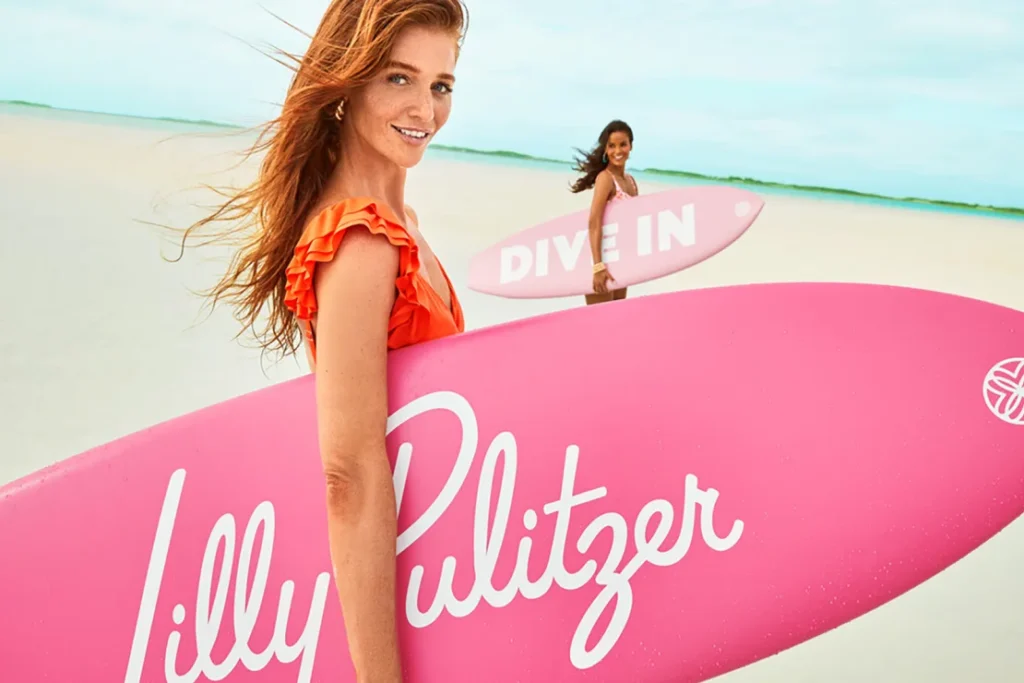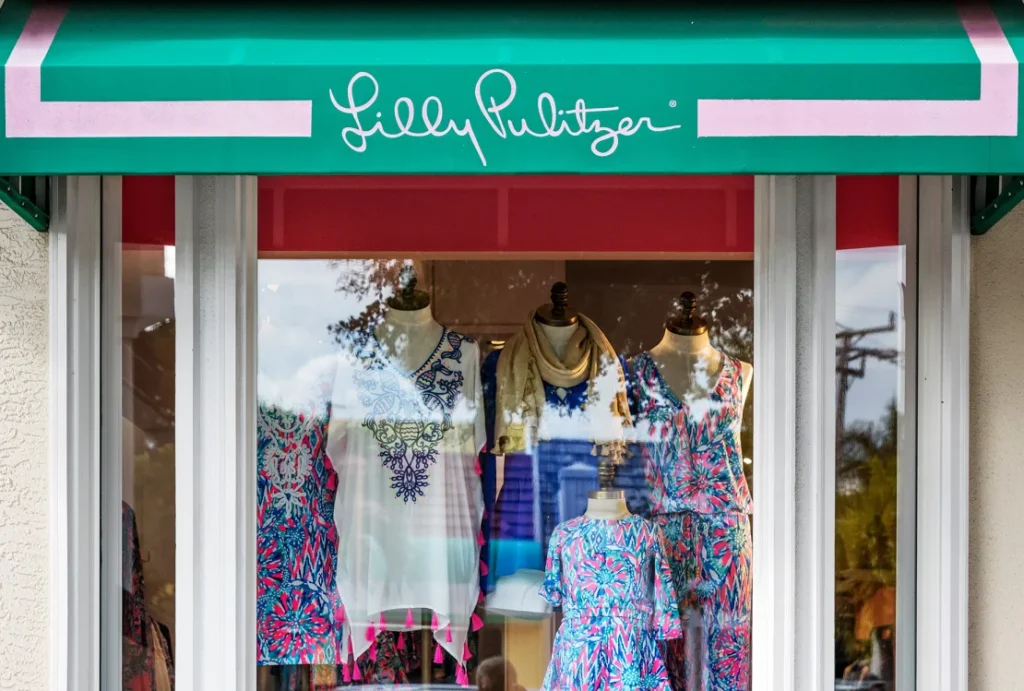
A decade ago, Lilly Pulitzer’s bright prints were omnipresent on college campuses across the US, and a pop-up for its 2015 collaboration with Target in New York’s Bryant Park drew crowds of Millennial shoppers at the height of their modern preppy obsession. That same year, sales grew 22 percent.
Fashion has since moved on from that aesthetic, but Lilly Pulitzer hasn’t: In an era of quiet luxury, affordable facsimiles of the loud colors and patterns favored by the wealthy denizens of Palm Beach, Florida, where the brand was founded 65 years ago, look out of place. Sales reflect that stagnation, growing 1 percent last year to $343.5 million.
Looking to usher in the brand’s next era, earlier this month Lilly Pulitzer unveiled a new logo that retains its signature bright pink hue — but now with a typeface that looks straight out of the 1950s, the decade the brand was founded.
Connecting with a new generation will take more than a new font, however.

Gen-Z tastes reign supreme now, and they have a very different idea of what preppy looks like. Rather than shift dresses, they’re big on neutral oversized blazers and baggy jeans. Rather than fully capitulate to Gen Z’s tastes, Lilly Pulitzer is targeting customers who “love the brand that maybe hadn’t shopped in a while,” said the brand’s chief executive Michelle Kelly. That includes occasion wear, where bright and bold still flies even in today’s quiet luxury moment. In March, it released a collaboration with Badgley Mischka, with pieces running from $400 to $700, versus a $100 to $300 standard price point.
“There are definitely moments in the culture where trends are going to be in our favor or less,” Kelly said. “Our approach… is to do what we do. That balance of staying grounded to who we are, but being aware of changes.”
The cultural tides may also be turning in Lilly Pulitzer’s favor once again. Palm Beach has been on the rise as a fashion destination in recent years, with brands including Hill House Home, Nili Lotan and MyTheresa hosting events and opening stores there. Plus, 1960s Palm Beach style has been in the spotlight this spring on Apple TV’s series “Palm Royale.”
More than that, it’s a brand that plenty of women — from those who were contemporaries of Pulitzer herself to their granddaughters who are sharing their Lilly hauls on TikTok — have a soft spot for.
“Lilly is one of the few brands that customers of all ages can come to an event, shop and not be alarmed that someone three decades older or younger is shopping,” said Kelly. “It’s just really special that all ages can have an affinity (for the brand).”
Lilly’s new look
Founded in 1959, the brand was born out of a conundrum faced by its eponymous founder: Palm Beach residents Pulitzer and her husband owned several orange groves, and Pulitzer operated a juice stand. Constantly finding juice stains on her clothes, she asked her dressmaker to make a dress with colors bright enough to hide the marks. They were so popular she began selling them at the juice stand, too.
By the 1960s, they had become something of an icon of American apparel, and were particularly a favorite among well-heeled women including Jacqueline Kennedy Onassis and socialite Wendy Vanderbilt.

In 2010, the company was acquired by Oxford Industries, which also owns Tommy Bahama and Johnny Was, among other brands, and is now headquartered in Philadelphia. But it maintains firm roots in Palm Beach.
“Nothing is more rooted in a resort Americana aesthetic than Lilly Pulitzer,” said Robert Burke, chief executive of retail consultancy Robert Burke Associates. “It’s always stayed very grounded in that Palm Beach mentality.”
Kelly sees the brand’s history as an advantage in connecting with a younger audience.
“Gen-Z wants that authenticity, and we have an authentic brand story that we lean into, and that I think differentiates us in the crowded market right now,” she said.
Still, she’s aware that the brand needs to push forward as well as look to the past. The logo switch up is just one element in a “journey of brand refreshment” that Lilly is currently undergoing, Kelly said. The goal, she added, is to strike the right balance between honoring the brand’s history — and its loyal customers — while pushing it forward enough that it resonates with young consumers.
“We just saw the opportunity to have our visual identity and our overall branding fit our needs a bit better,” she said. The new logo, created by designer Robin Kramer, she said felt like a “great balance of look backward, but a huge step forward” with a more modern take on a retro-inspired typeface.
As well, the brand is popping up in new spaces. Collaborations have long been a part of the brand’s strategy; since Target, it inked a partnership with Pottery Barn that’s still ongoing. This year, in addition to the Badgley Mischka collaboration, it rolled out a team-up with Natalie’s Juice, selling bottles of orange juice featuring a custom Lilly Pulitzer sticker. The nod to the brand’s origin story made it a natural fit for its diehard consumers, Kelly said.
The brand is predominantly a direct-to-consumer business, with 85 percent of its sales coming from its own channels. That means it’s more insulated from wholesale troubles, but more reliant on its direct connection with consumers. With about 66 percent of its direct sales coming online, Lilly Pulitzer wants to grow its brick-and-mortar presence and plans to open six stores in 2024, including a new location in Cranston, Rhode Island that opened its doors in April. To reach new consumers — and reconnect with older ones — it’s also building its presence on TikTok, creating more cuts of its ads to run across various platforms.
The hope is all these ingredients will keep the brand’s longtime loyalists happy, but intrigue new customers, too.
“Sometimes brands just have periods where they have popularity again because they take a fresher direction,” said Burke. “There’s no written script for it, but it certainly has incredibly good bones.”
